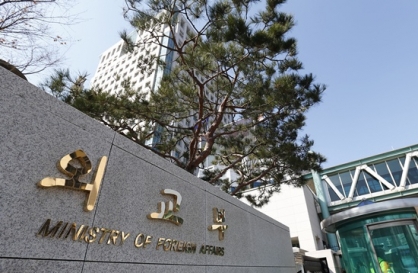[Michal Levertov] Can protests bring Jews, Arabs together in Israel?
ByPublished : Aug. 22, 2011 - 19:00
HURFEISH, Israel ― The Druze village of Hurfeish seems as pastoral as the rural north of Israel can be. Sitting on the northwestern slope of the Meron Mountains amid a national park, the centuries-old settlement of about 6,000 residents looks like an image taken from a tourist postcard: green, beautiful, serene.
But earlier this month, the atmosphere was not as peaceful. A policemen and an official from the national park authority were attacked by village youths when they attempted to enforce a demolition order for an unauthorized building.
As the disturbance spread, hundreds of youngsters set fire to tires and blocked Hurfeish’s main road, a central northern Galilee transport route, in protests that took four hours to bring under control.
Community leader Fawaz Hossain, 57, denounces the violence. But he puts the blame squarely on the police and the parks’ authority decision to issue the demolition order just as Israel is in the midst of an unprecedented wave of activism over rising housing prices.
What started off on Tel Aviv’s Rothschild Avenue as a localized protest has turned into a nationwide call for social justice. At its peak, about 300,000 people turned out on across Israel in peaceful opposition to the growing disparity of income in Israel. And although initially seen as a mass movement among Jews, the country’s Arab citizens are increasingly involved in the civil protest.
“We are clearly a part of the wider tent protest, even though there are differences in our needs and demands,” explained Hossain. “It’s not the housing prices that we protest against, but the utter lack of adequate housing for us.” Much of the land in Hurfeish was confiscated by the state decades ago, with most of it going to create a nature preserve. But some of the land was also intended for the development of a neighboring Jewish village.
Ever since, Hurfeish’s residents have been battling building restrictions on the remaining land.
While the residents of Hurfeish are quick to link their protest with those occurring elsewhere in Israel, other Arab communities are hesitant to join in what they see as a Jewish issue.
This hesitance, says Aida Touma-Sliman, editor-in-chief of the Arabic al-Ittihad daily newspaper, has been due to a “deep disbelief within the Arab population ― following decades of exclusion and discrimination ― that it is capable of influencing the general Israeli agenda.”
But in truth, Touma-Sliman notes, the issues facing the Arab community ― lack of land, housing and limited access to social welfare ― are the same ones driving Israeli Jews into the streets.
While Israeli Arabs are inspired by the Arab Spring uprisings they see all around them, they also doubt they also are able to affect social change.
“Arabs in Israel also feel that the changes in the Arab states are being generated by a great sense of ownership that the citizens there have,” Touma-Sliman said. “The Arab public in Israel feels disconnected and alienated from the rest of the population, thus being deprived of the feeling of entitlement which enabled the protests of the Arab Spring, as well as that of the Jewish population in Israel.”
Nonetheless, Touma-Sliman said, the Arab public should join the movement.
“If there ever was willingness in the Israeli Jewish mainstream to hear the Arab citizens cry out against discrimination, land confiscations or house demolishing ― and to do that not through a nationalist lens ― it is now,” she said.
Others see no chance for the protesters finding common ground.
Writing in Haaretz, a major English-language newspaper in Israel, Arab journalist Zuheir Anderus emphasized that he could not identify with the protest because it “ignores my existence and my problems.”
Indeed, the 22-member committee that Prime Minister Benjamin Netanyahu appointed to offer solutions to the protestors’ demands does not include a single Arab representative.
But others see this as a unique opportunity to unite the country’s diverse communities.
Shahin Nassar, a 25-year-old student and journalist, founded an encampment in Wadi Nisnas, an Arab neighborhood in the northern city of Haifa, after participating in a rally in a Jewish neighborhood where he was disappointed by the lack of Arab participation.
“This protest is definitely mine too, and it is for me to determine its nature and its goals,” he said. “Any achievement, whether it is reducing housing costs or electricity prices, will benefit the Arab population just as much. Of course, we are in a unique position and nobody denies it. We are an integral part of the Palestinian people. But just the same, we are an integral part of the state of Israel.”
By Michal Levertov
Michal Levertov is a reporter in Tel Aviv who writes for The Institute for War & Peace Reporting, a nonprofit organization that trains journalists in areas of conflict. ― Ed.
(McClatchy-Tribune Information Services)
But earlier this month, the atmosphere was not as peaceful. A policemen and an official from the national park authority were attacked by village youths when they attempted to enforce a demolition order for an unauthorized building.
As the disturbance spread, hundreds of youngsters set fire to tires and blocked Hurfeish’s main road, a central northern Galilee transport route, in protests that took four hours to bring under control.
Community leader Fawaz Hossain, 57, denounces the violence. But he puts the blame squarely on the police and the parks’ authority decision to issue the demolition order just as Israel is in the midst of an unprecedented wave of activism over rising housing prices.
What started off on Tel Aviv’s Rothschild Avenue as a localized protest has turned into a nationwide call for social justice. At its peak, about 300,000 people turned out on across Israel in peaceful opposition to the growing disparity of income in Israel. And although initially seen as a mass movement among Jews, the country’s Arab citizens are increasingly involved in the civil protest.
“We are clearly a part of the wider tent protest, even though there are differences in our needs and demands,” explained Hossain. “It’s not the housing prices that we protest against, but the utter lack of adequate housing for us.” Much of the land in Hurfeish was confiscated by the state decades ago, with most of it going to create a nature preserve. But some of the land was also intended for the development of a neighboring Jewish village.
Ever since, Hurfeish’s residents have been battling building restrictions on the remaining land.
While the residents of Hurfeish are quick to link their protest with those occurring elsewhere in Israel, other Arab communities are hesitant to join in what they see as a Jewish issue.
This hesitance, says Aida Touma-Sliman, editor-in-chief of the Arabic al-Ittihad daily newspaper, has been due to a “deep disbelief within the Arab population ― following decades of exclusion and discrimination ― that it is capable of influencing the general Israeli agenda.”
But in truth, Touma-Sliman notes, the issues facing the Arab community ― lack of land, housing and limited access to social welfare ― are the same ones driving Israeli Jews into the streets.
While Israeli Arabs are inspired by the Arab Spring uprisings they see all around them, they also doubt they also are able to affect social change.
“Arabs in Israel also feel that the changes in the Arab states are being generated by a great sense of ownership that the citizens there have,” Touma-Sliman said. “The Arab public in Israel feels disconnected and alienated from the rest of the population, thus being deprived of the feeling of entitlement which enabled the protests of the Arab Spring, as well as that of the Jewish population in Israel.”
Nonetheless, Touma-Sliman said, the Arab public should join the movement.
“If there ever was willingness in the Israeli Jewish mainstream to hear the Arab citizens cry out against discrimination, land confiscations or house demolishing ― and to do that not through a nationalist lens ― it is now,” she said.
Others see no chance for the protesters finding common ground.
Writing in Haaretz, a major English-language newspaper in Israel, Arab journalist Zuheir Anderus emphasized that he could not identify with the protest because it “ignores my existence and my problems.”
Indeed, the 22-member committee that Prime Minister Benjamin Netanyahu appointed to offer solutions to the protestors’ demands does not include a single Arab representative.
But others see this as a unique opportunity to unite the country’s diverse communities.
Shahin Nassar, a 25-year-old student and journalist, founded an encampment in Wadi Nisnas, an Arab neighborhood in the northern city of Haifa, after participating in a rally in a Jewish neighborhood where he was disappointed by the lack of Arab participation.
“This protest is definitely mine too, and it is for me to determine its nature and its goals,” he said. “Any achievement, whether it is reducing housing costs or electricity prices, will benefit the Arab population just as much. Of course, we are in a unique position and nobody denies it. We are an integral part of the Palestinian people. But just the same, we are an integral part of the state of Israel.”
By Michal Levertov
Michal Levertov is a reporter in Tel Aviv who writes for The Institute for War & Peace Reporting, a nonprofit organization that trains journalists in areas of conflict. ― Ed.
(McClatchy-Tribune Information Services)




![[Weekender] Korean psyche untangled: Musok](http://res.heraldm.com/phpwas/restmb_idxmake.php?idx=644&simg=/content/image/2024/05/02/20240502050841_0.jpg&u=)

![[Eye Interview] 'If you live to 100, you might as well be happy,' says 88-year-old bestselling essayist](http://res.heraldm.com/phpwas/restmb_idxmake.php?idx=644&simg=/content/image/2024/05/03/20240503050674_0.jpg&u=)










![[Herald Interview] Director of 'Goodbye Earth' aimed to ask how we would face apocalypse](http://res.heraldm.com/phpwas/restmb_idxmake.php?idx=652&simg=/content/image/2024/05/03/20240503050732_0.jpg&u=)
